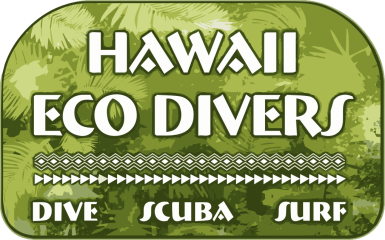21.3% STRESS DROP IN STRESS
Stress can plummet by 21.3% per hour due to engagement with nature, according to a study on urban nature experiences. This effect is over and above cortisol’s natural diurnal drop of 11.7%. Translating this to the Oahu diving context: the island’s abundant natural beauty not only serves as a visual spectacle but could also significantly mitigate stress levels. The optimal “nature pill” effect occurs within 20-30 minutes, highlighting that even short diving excursions in Oahu can be potent stress relievers.
Source
400+ OF INSHORE AND REEF FISHES
Diving in Oahu offers the unique opportunity to explore waters teeming with over 400 species of inshore and reef fishes, a treasure unique to Hawaii’s Marine Life Conservation Districts (MLCDs). From colorful wrasses to predatory sharks, each species plays a distinct role in the complex, nearshore ecosystem. MLCDs have fostered an environment so robust, you’d be hard-pressed to find such aquatic biodiversity elsewhere.
Source
13.5% HIGHER BODY OXYGEN STORE
This sourced study empirically undermines the assumption that dive-conditioning could substantially enhance muskrats’ aerobic dive limit (ADL). While trained muskrats did exhibit a 13.5% higher total body oxygen store compared to the untrained, this physiological advantage failed to yield a significant improvement in the ADL or in dive behavior. The inference is unequivocal: training yields certain physiological gains, but its utility in enhancing actual diving performance is constrained.
Source
176 DIVERS AND MENTAL WELLNESS
This study discredits the notion that the psychological benefits of scuba diving significantly surpass those of merely spending time at the beach. Conducted in the marine-protected area of Cap de Creus, the research leverages Profile of Mood State (POMS) questionnaires to gauge the mental health of 176 divers versus 70 beachgoers. While both activities yielded a decrease in POMS scores, indicating a positive mental health impact, the study fails to establish the psychological superiority of one over the other.
Source
44.32X MENTAL HEALTH IMPROVEMENT
Survey of 722 participants confirms outdoor swimming, including in the ocean such as Oahu Hawaii, significantly elevates mental health with a 44.32x higher likelihood of positive impact (B=3.79, P<.001). Also shows notable gains in musculoskeletal conditions (5.25x, P=.004) and ‘other’ medical categories (4.02x, P=.02). Beward though that the study does lack causal evidence but provides robust data for targeted future research.
Source
25% OF CORAL SPECIES IN HAWAII ARE ENDEMIC
HCRN, situated in O’ahu, utilizes land-based coral nurseries for rapid cultivation of large coral colonies for reef restoration. It also maintains the Rare Hawaiian Coral Ark, a live repository for rare and endemic coral species. Unique challenges include Hawaii’s high rates of coral and marine life endemism and slower coral growth (1-2 cm/year) compared to other regions (10-20 cm/year). Focuses on cultivating large colonies (40–100 cm) due to their superior ecological functions.
Source
3,000-MILE MIGRATIONS OF HUMPBACK WHALES
There is probably no better place to see whales than Oahu, Hawaii! According to the NOAA Office for Coastal Management, humpback whales undertake extensive migrations, covering up to 3,000 miles. They travel from their feeding areas in the cold Polar regions to their breeding grounds, although specific details from the 28-page report were not provided for further elaboration.
Source
NORTH SHORE, OAHU 96 TONS OF LIMESTONE MEGACLASTS
This study focuses on the limestone megaclasts found on the rock platform near Sunset Beach, Oahu. Megaclasts can weigh up to 96 tons and are mostly emplaced by high-energy events like tsunamis and winter storms. Photographic evidence from 1905 to 1996 shows episodic rearrangement and new appearances of these megaclasts. The largest known megaclast was placed between 1940 and 1950, likely by the 1946 Aleutian tsunami, and has moved twice in 30-meter jumps. Marine erosion processes, especially along joints and cracks, facilitate partial detachment of megaclasts. Higher numbers of megaclasts are found in the north and northwest sectors due to exertion of maximum wave power influenced by steep slope and ramp-like submarine topography.
Source
HAWAII'S $102 MILLION MARINE MARVELS
If your scuba diving adventures take you to Hawaii, you might just encounter spinner dolphins—a lucrative local treasure! A study called “Cashing in on Spinners” revealed that the dolphin-swim industry in Hawaii garnered a staggering $102 million (USD) in 2013. What’s more, dolphin viewing alone made $19 million more than dolphin swims. When diving in Hawaii, you’re not just experiencing marine life but also interacting with a multi-million dollar industry.
Source
214M BREATH-HOLD RECORDS
Breath-hold diving defies physiological limits, with records extending up to 214 meters on a single breath. This activity necessitates a complex physiological orchestra that deals with oxygen conservation, exercise economy, and hyperbaric management. Acute risks include pulmonary barotrauma, nitrogen narcosis, and decompression sickness, pointing to an urgent need for further research in this area to understand long-term medical consequences.
Source
